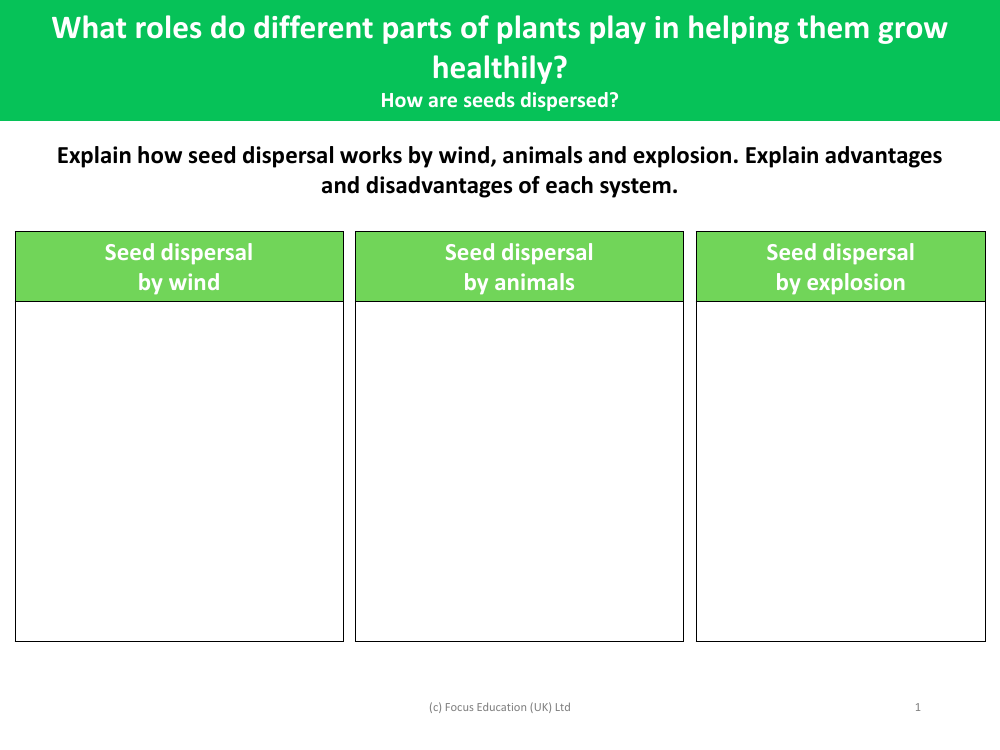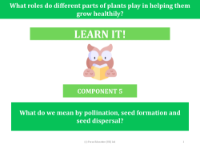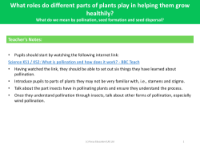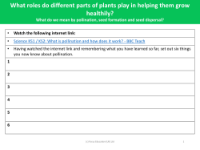Seed dispersal by wind - worksheet

Science Resource Description
Seed dispersal is a crucial process in the life cycle of plants, ensuring that seeds are spread from their parent plant to new locations where they can germinate and grow. One method of seed dispersal is by wind, where lightweight seeds or those with special adaptations like wings or parachutes are carried away from the parent plant. This method allows seeds to cover large distances, potentially finding suitable new habitats. However, it is somewhat random and seeds may land in inhospitable environments. Another common method is dispersal by animals, where seeds are transported by being eaten and later excreted, or by sticking to fur or feathers. This can be advantageous as seeds are often deposited in nutrient-rich areas, but it relies on animal behaviour, and seeds may be subject to digestion or not be carried far from the parent plant.
Explosive dispersal is a dramatic method where seeds are catapulted from the parent plant when a fruit or pod dries and suddenly splits open. This ensures that seeds are scattered away from the immediate vicinity of the parent, reducing competition. However, the range of dispersal is typically limited to a few meters. Different parts of plants, such as fruit, pods, or specialised seed structures, play vital roles in these dispersal mechanisms. They not only protect the seeds but also facilitate their movement away from the parent plant, increasing the chances of successful germination and growth in a new location. Understanding how seeds are dispersed and the roles various plant parts play is essential for comprehending the intricacies of plant reproduction and survival.



